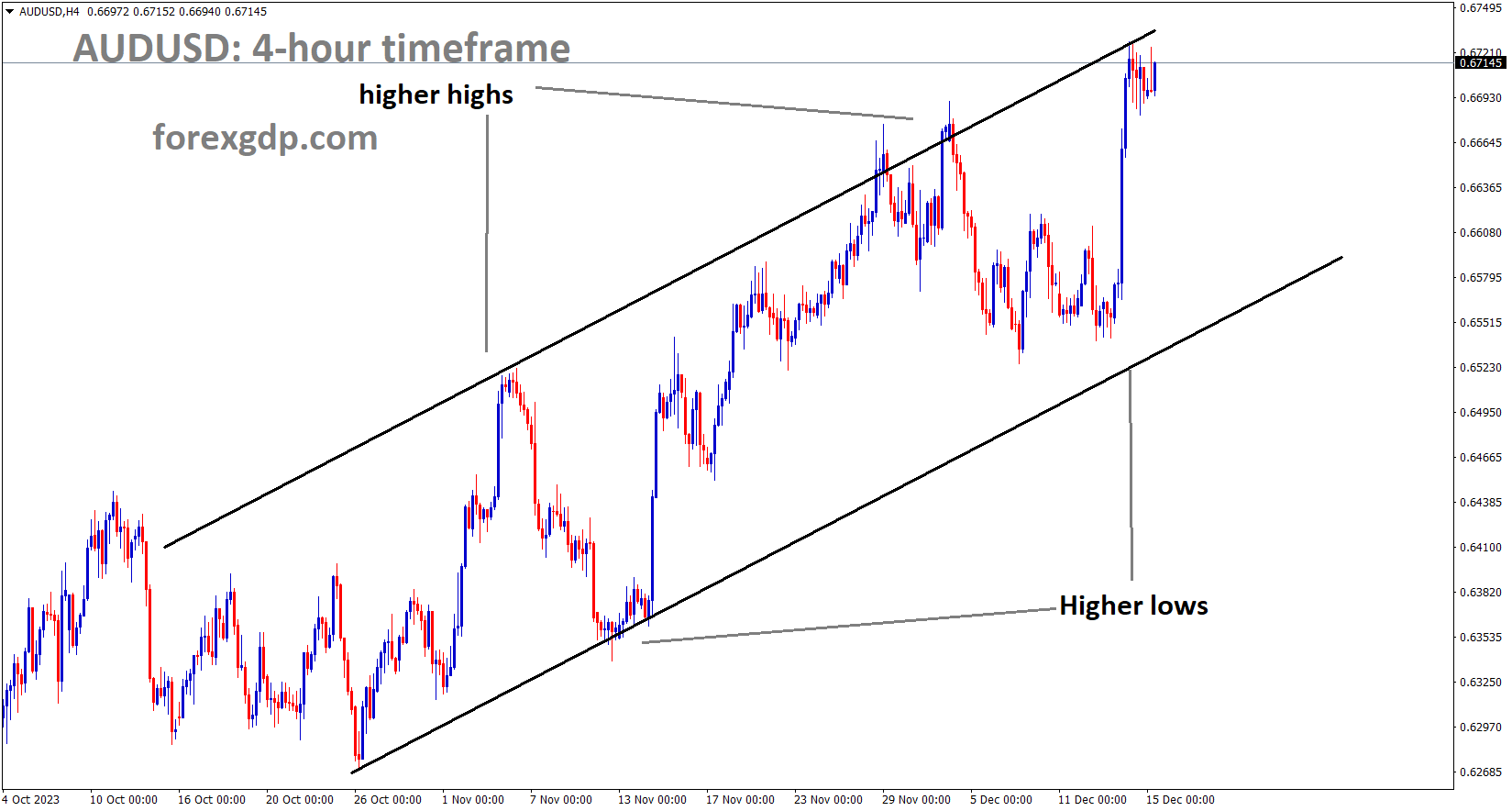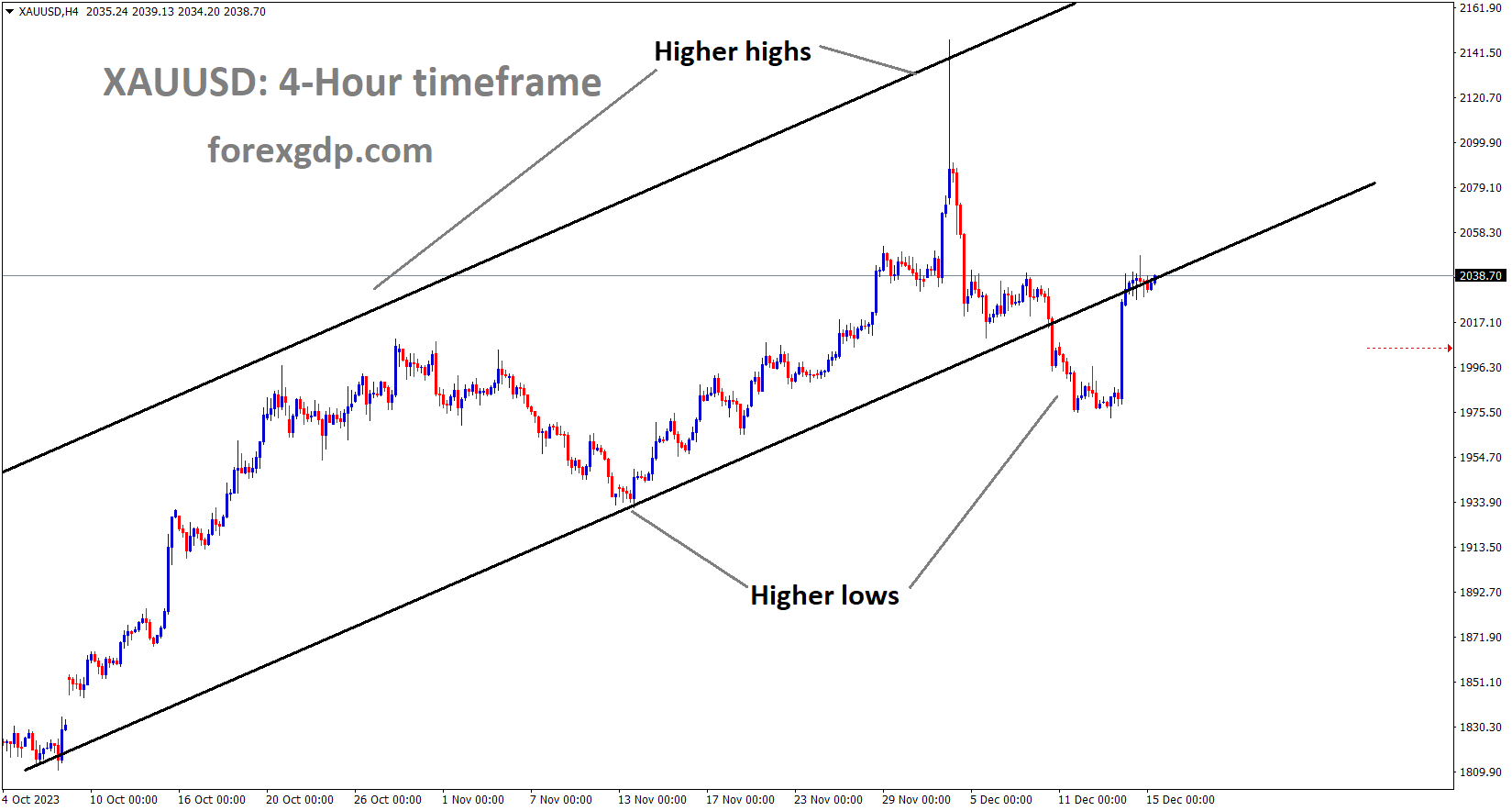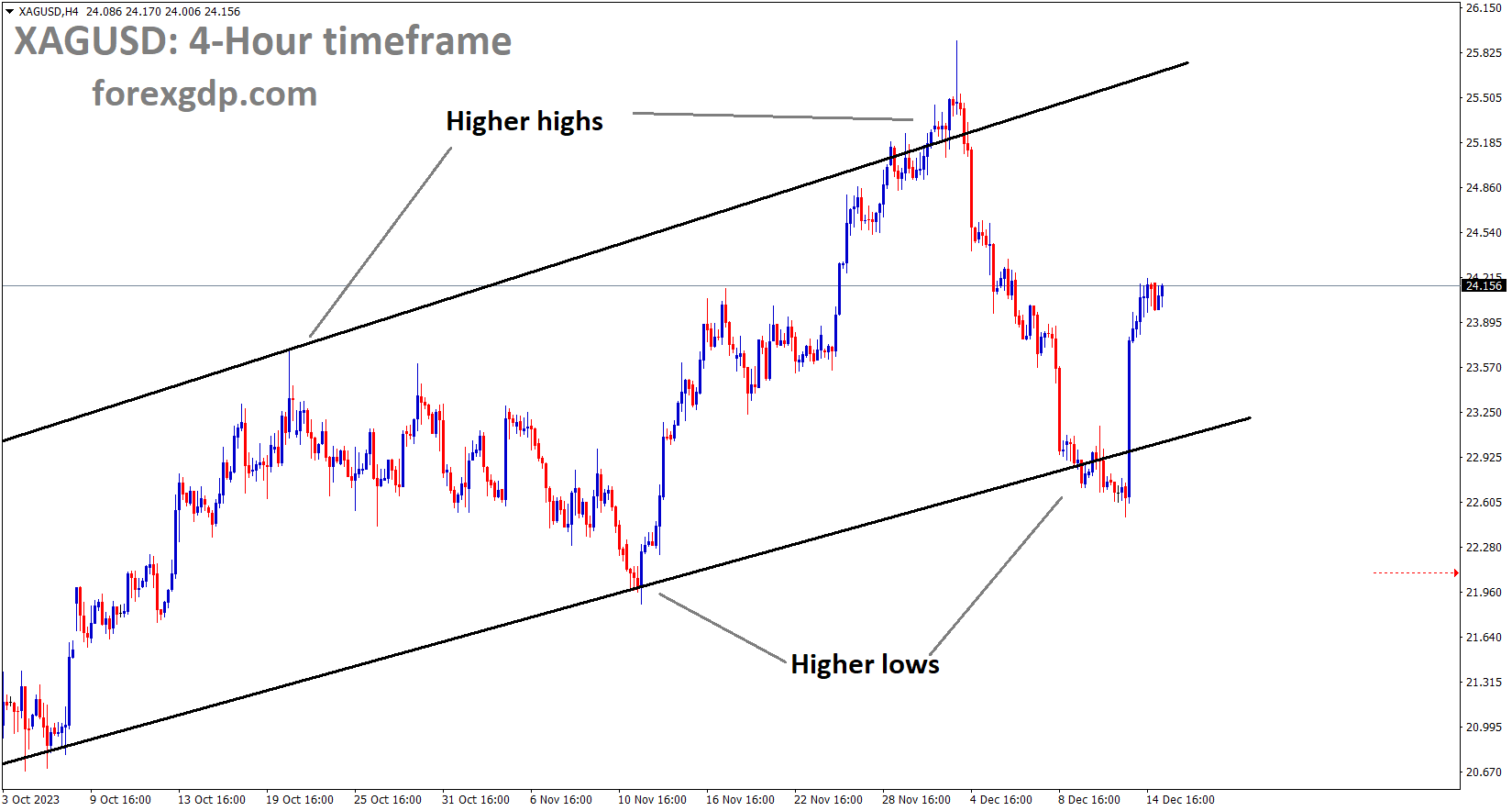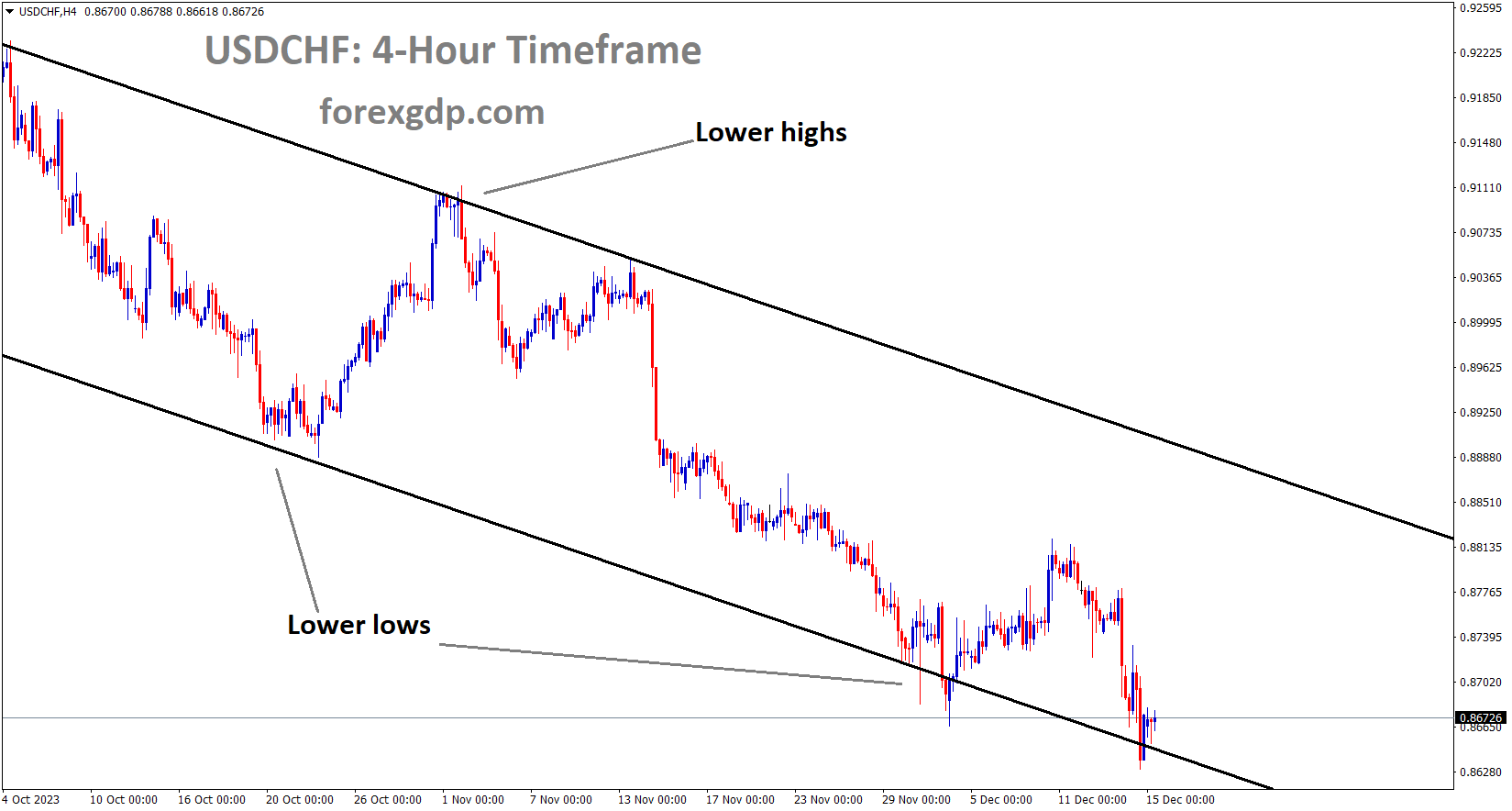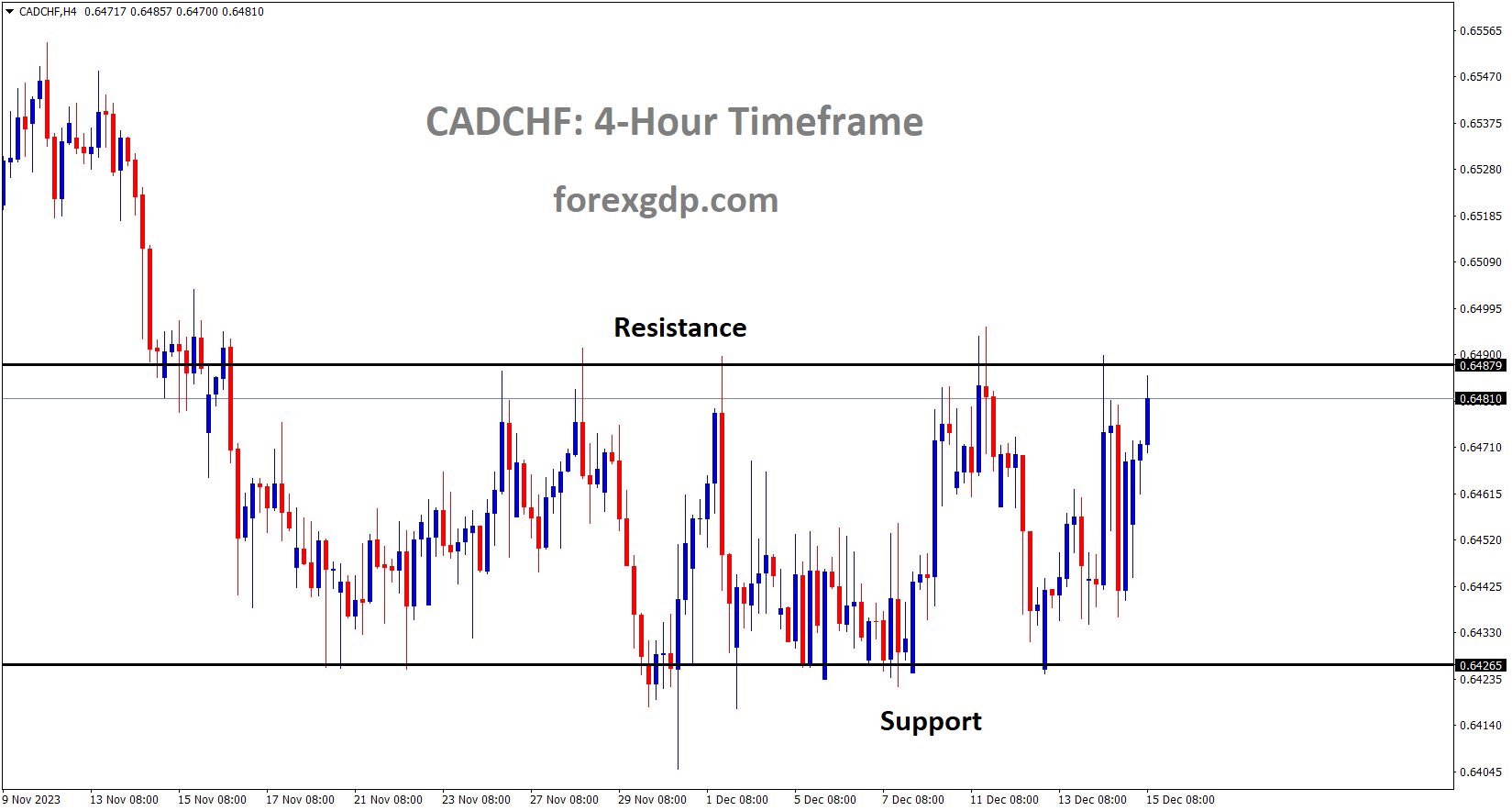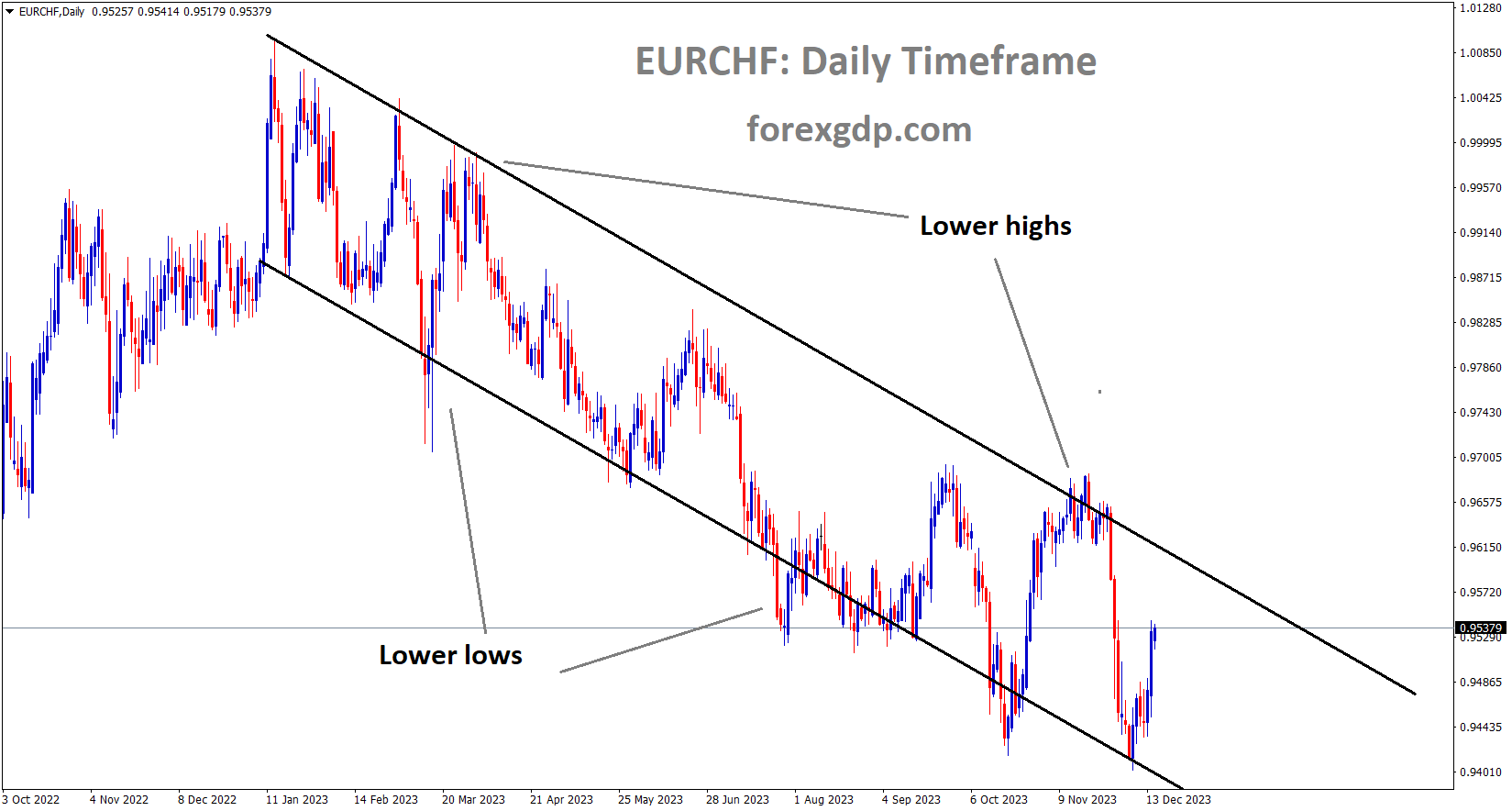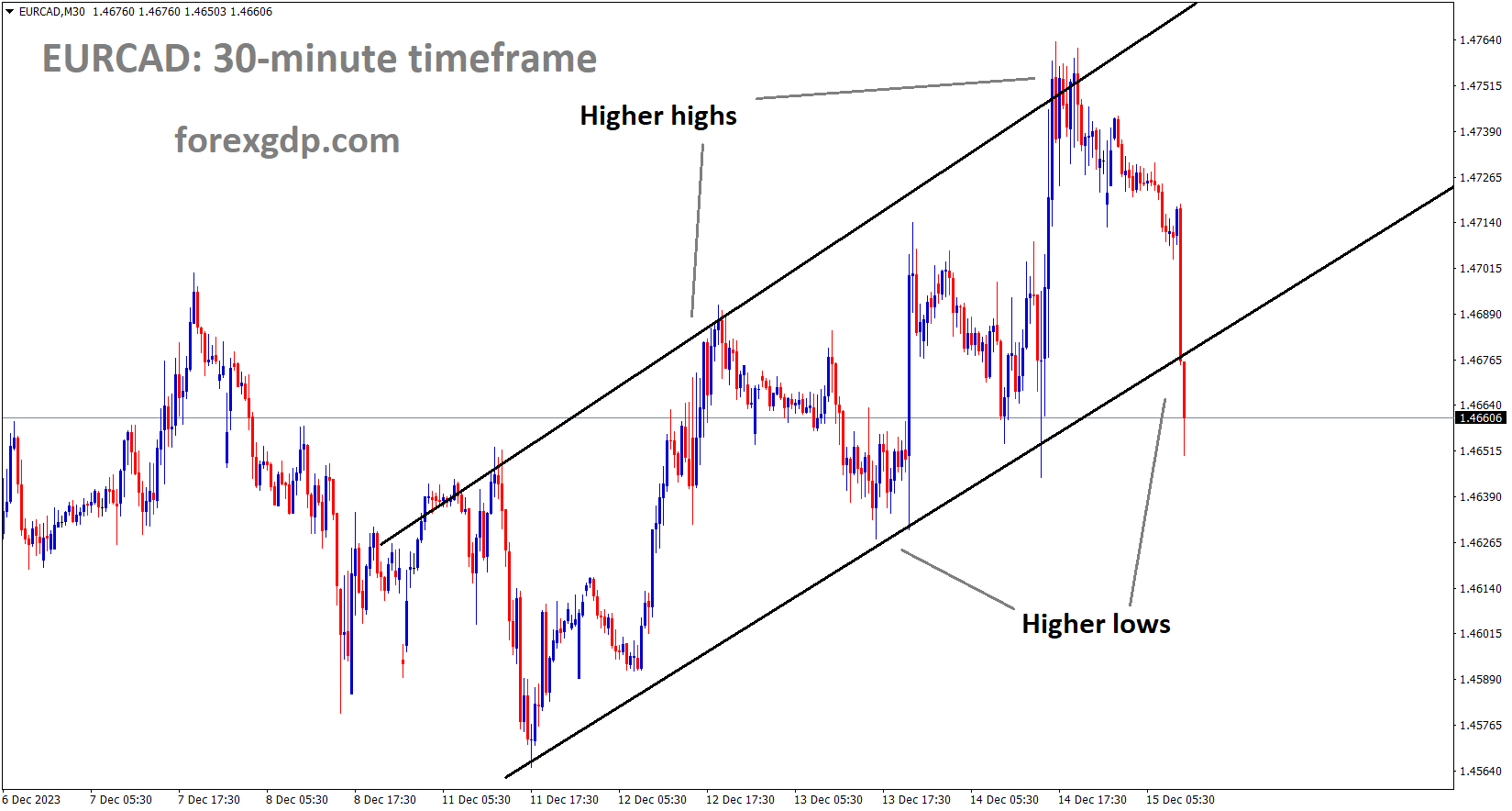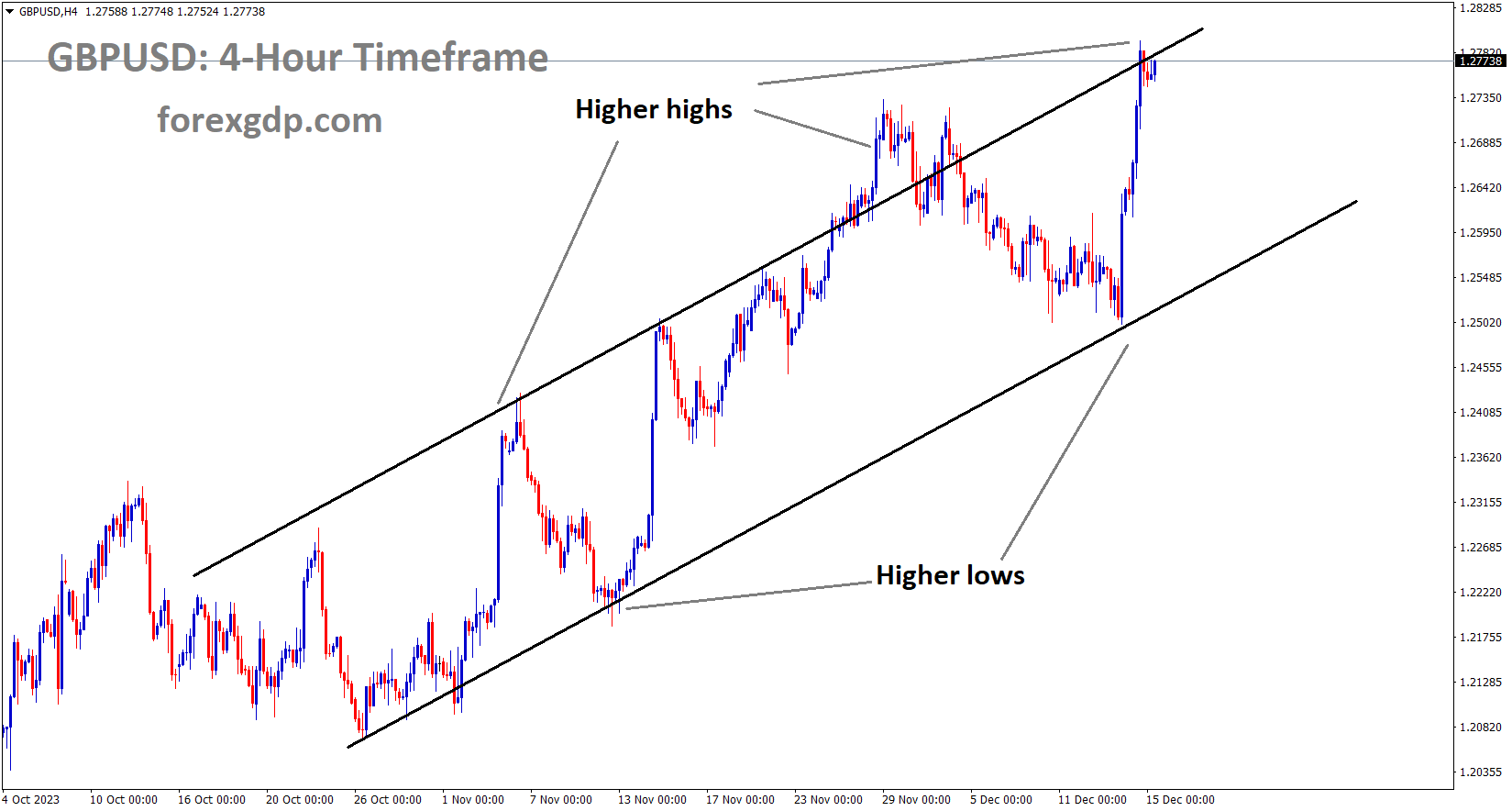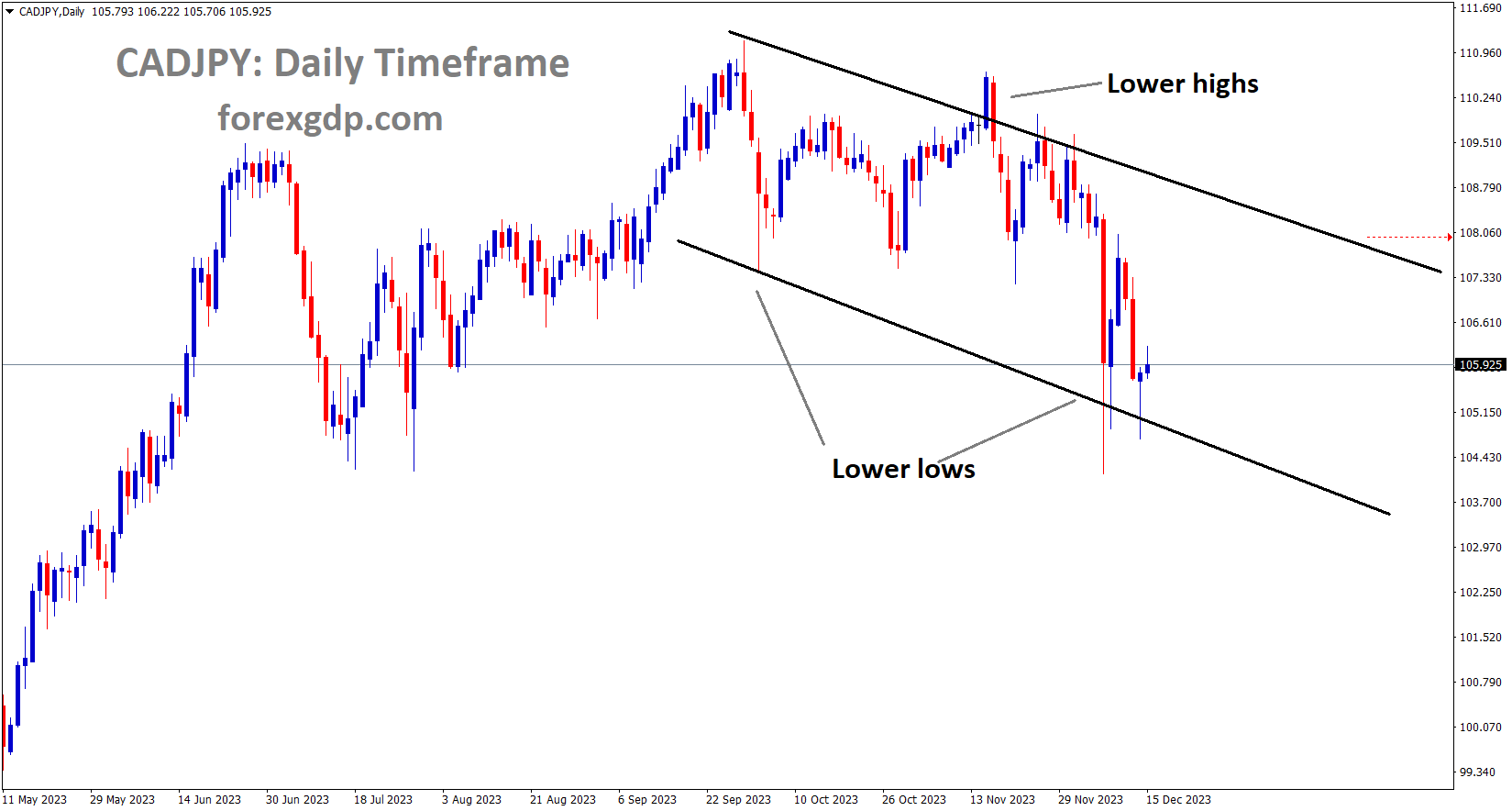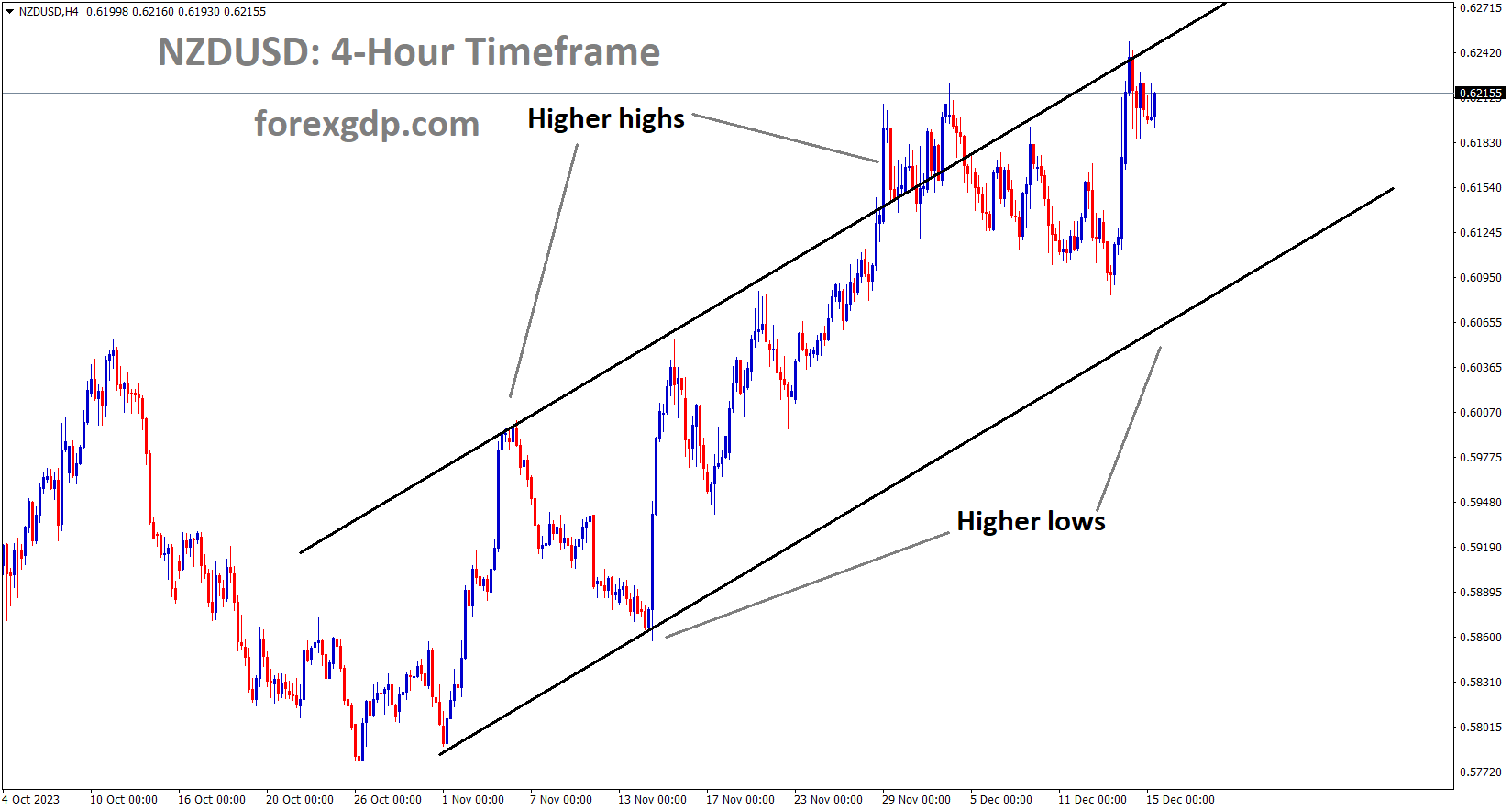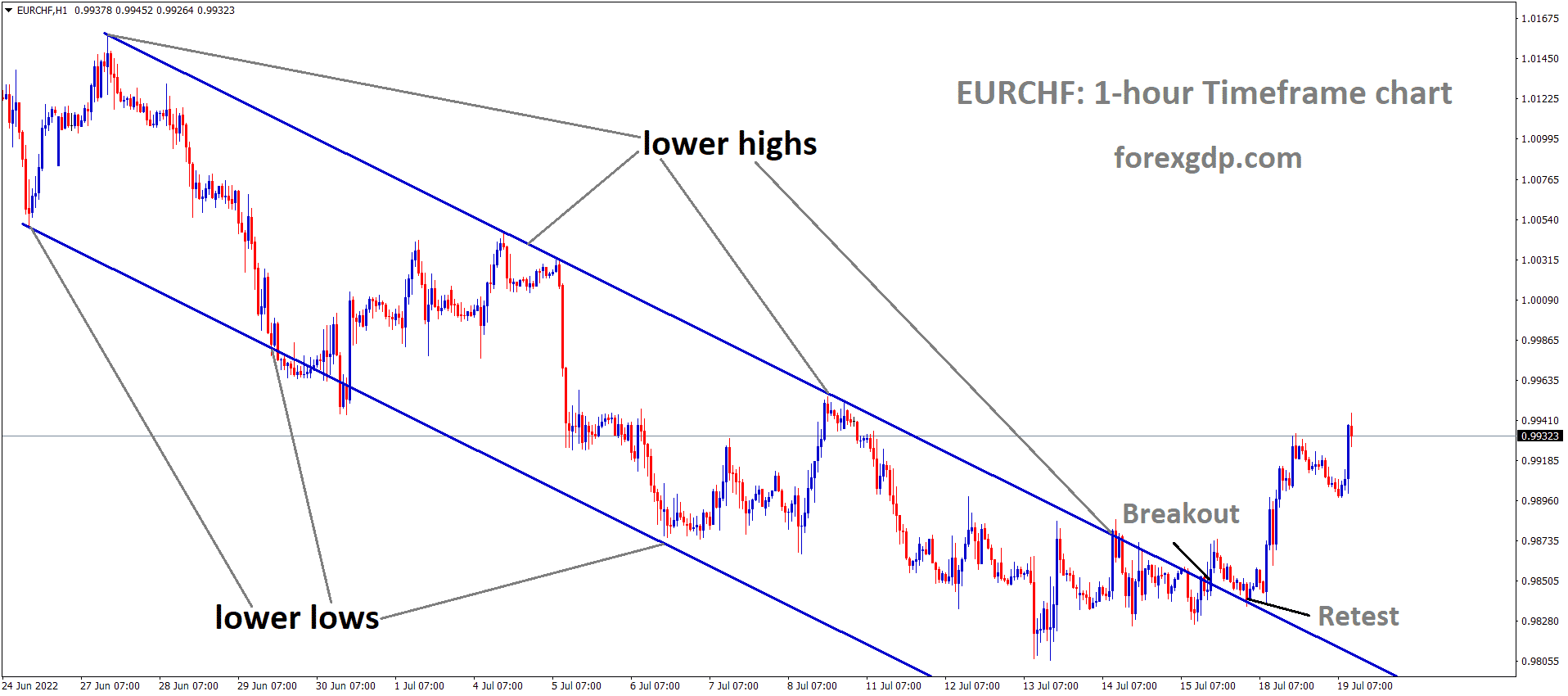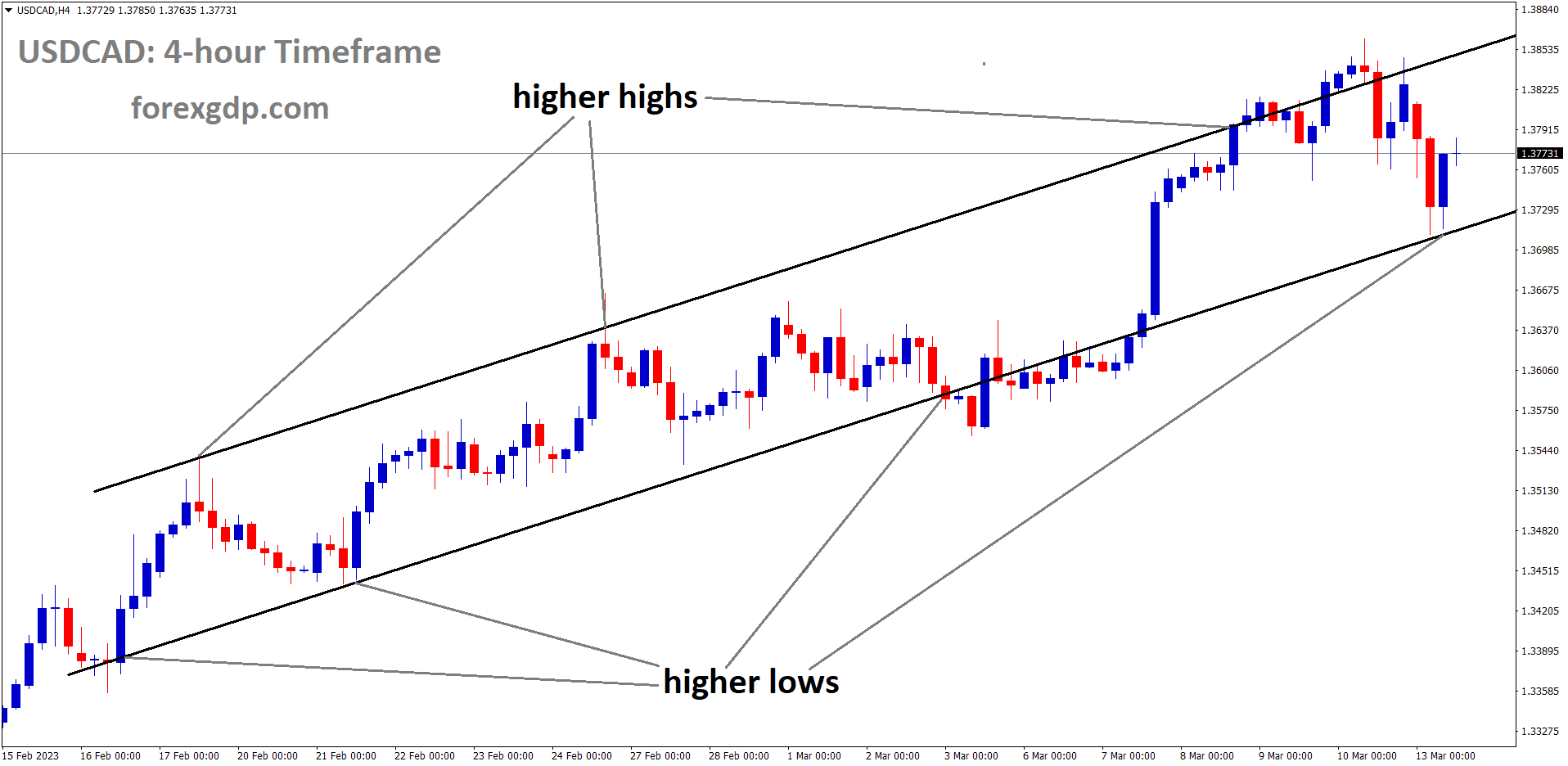AUDUSD Analysis:
AUDUSD is moving in an Ascending channel and the market has reached the higher high area of the channel
The Australian Composite PMI index for December increased to 47.4, up from 46.2 in November. Additionally, the Services PMI data rose to 47.6 from the previous month’s 46.0, while Manufacturing PMI data inched up to 47.8, just slightly higher than the previous month’s 47.7. This data, reaching a two-month high, is a positive development for the Australian economy and is welcomed.
According to the National Bureau of Statistics, China is not expected to experience deflation. The economy is showing signs of recovery, although domestic demand in China is still not at optimal levels. However, there is optimism for long-term growth. Additionally, the macroeconomic policies implemented in response to the challenges posed by Covid-19 are positively impacting China’s economy.
Based on the Preliminary Judo Bank Australia Purchasing Managers Index by S&P Global, the flash Composite PMI for December has risen to 47.4, reaching a two-month high compared to November’s 46.2, which marked a thirteen-month low. The key figures for the flash Australia Composite PMI Output Index are as follows: December – 47.4, November – 46.2. Additionally, the Flash Australia Services PMI Business Activity Index for December stands at 47.6, marking a two-month high compared to November’s 46.0. Likewise, the Flash Australia Manufacturing PMI for December is at 47.8, also reaching a two-month high compared to November’s 47.7. It’s worth noting that all three sectors of the preliminary December PMI have shown improvement, hitting two-month highs. However, they all remain in contraction territory, below the threshold of 50.0.

According to Warren Hogan, Chief Economic Advisor at Judo Bank, the December Flash PMI report indicates slight improvements in business activity as the year comes to a close. However, it also confirms that the economy is still following a soft-landing trajectory. Both key activity indicators remain below 50, consistent with a temporary growth slowdown, and are significantly above levels indicative of an economic recession.
After the publication of significant economic data for November in China, the National Bureau of Statistics shared its perspective on the state of the economy. The Chinese economy is rebounding as the effects of macroeconomic policies take hold. However, it is noted that domestic demand has not yet reached an adequate level, and further efforts are needed to consolidate the ongoing economic recovery. It is expected that China will meet its annual development targets, and the sustained growth in demand is contributing positively to improvements in consumer prices. As a result, China is not anticipated to experience deflation. Moreover, the short-term adjustments observed in the property sector are deemed beneficial for the sector’s stable and sustainable long-term development.
GOLD Analysis:
XAUUSD Gold price is moving in an Ascending channel and the market has rebounded from the higher low area of the channel
Gold prices are stabilizing at their current level, and there is a possibility that the US Federal Reserve could consider implementing rate cuts starting in March 2024. The decline in US Treasury yields is providing support to gold prices
The price of gold continued its lateral consolidation trend, remaining below the one-and-a-half-week high reached at approximately the $2,047-2,048 level on the previous day. This came in the wake of stronger-than-expected monthly job reports released on Friday, along with positive US macroeconomic data from Thursday, which suggested a resilient economy and raised doubts about the Federal Reserve implementing early policy easing in March 2024. These developments led to a modest recovery in US Treasury bond yields. Additionally, the prevalent risk-on sentiment, boosted by hopes of stimulus measures from China, acted as a headwind for the safe-haven precious metal. Currently, the markets are still pricing in a nearly 60% probability of the Fed initiating interest rate cuts in March 2024, with odds of a rate cut in May standing at 90%. This limits significant upside movement in US bond yields and continues to undermine the US Dollar, which, in turn, lends some support to gold, a non-yielding asset. However, for the time being, gold appears to have halted its post-FOMC rally. The release of flash PMI data on Friday is expected to offer fresh insights into the global economy’s health and may create short-term trading opportunities for XAUUSD

Thursday’s optimistic US macroeconomic data has cast doubt on the Fed’s potential for an early rate cut, providing relief to US Treasury bond yields and acting as a deterrent to gold prices in the context of the risk-on market sentiment. The US Commerce Department reported that Retail Sales in November increased by 0.3%, compared to a 0.2% decrease in the previous month and an anticipated 0.1% decline. Furthermore, core Retail Sales, excluding automobiles, surpassed expectations with a 0.2% increase, contrary to the consensus estimate of a 0.1% contraction. The Retail Sales Control Group also saw a 0.4% increase. Meanwhile, the US Labor Department reported that first-time unemployment insurance claims dropped to 202K last week, marking the lowest level since mid-October. Chinese data released on Friday indicated that Retail Sales had surged by 10.1% YoY in November, surpassing the previous figure of 7.6%, while Industrial Production grew by 6.6% YoY, up from a 4.6% rise in the previous month. Following this high-impact data release, the National Bureau of Statistics stated that the ongoing recovery in demand is contributing to improvements in consumer prices and that China is not likely to experience deflation.
Citing sources with knowledge of the matter, Reuters reported that Chinese leaders had agreed at an annual economic meeting this week to set the 2024 economic growth target at around 5.0%. Despite this, the markets still anticipate a nearly 60% chance of the Fed initiating rate cuts at its March meeting, with odds of a May rate cut standing at 90%. This, combined with the prevailing negative sentiment surrounding the US Dollar, which has been declining for four consecutive days and reaching a four-month low, is providing support to the precious metal. Looking ahead, the release of global flash PMI data on Friday could offer momentum to the precious metal and provide traders with short-term trading opportunities as the week concludes.
SILVER Analysis:
XAGUSD Silver price is moving in an Ascending channel and the market has rebounded from the higher low area of the channel
The US Dollar weakened in response to the release of better-than-expected US retail sales data, which showed a 4.1% increase in November, compared to the 2.25% rise in October. The Federal Reserve’s dovish stance on interest rates has contributed to the USD’s decline against other currencies.
The US Dollar has depreciated to 101.80, marking its weakest position since August. This decline is primarily attributed to the unexpected signal from the Federal Reserve indicating the possibility of three rate cuts in 2024, which has had a significant impact on both US Treasury yields and the value of the Greenback. During the final Federal Reserve meeting of 2023, the central bank welcomed a moderation in inflation figures, and the revised Dot Plot revealed that Fed governors do not anticipate any interest rate hikes in 2024. Furthermore, they projected a total of 75 basis points in easing measures for the year. This alignment between market expectations and the Fed’s stance has been positively received by the markets, leading to increased risk-on sentiment. The Fed’s indication of the potential for three rate cuts in 2024 exerted downward pressure on the US Dollar.
In addition to the Fed’s actions, the November Retail Sales report released by the US Census Bureau showed a robust 4.1% increase, surpassing the previous month’s 2.2% growth. Moreover, the US Department of Labor reported Initial Jobless Claims for the week ending December 9 at 202K, lower than the consensus forecast of 220K and the previous week’s 221K, suggesting a stronger-than-expected job market. Presently, US bond yields are on the decline, with rates at 4.35% for the 2-year yield, 3.87% for the 5-year yield, and 3.91% for the 10-year yield. Projections from the CME FedWatch Tool indicate that the market anticipates rate cuts as early as March 2024. This collective information underscores the weakening position of the US Dollar in recent trading sessions.
USDCHF Analysis:
USDCHF is moving in the Descending channel and the market has rebounded from the lower low area of the channel
Swiss Franc pairs have declined against other currency pairs following the Swiss National Bank’s decision to pause the rate hike, keeping it at 1.75% in its recent meeting. The central bank did not mention the possibility of further rate cuts in this meeting.
The Swiss Franc exhibited a mixed performance on Thursday following policy meetings held by major central banks, shedding light on the future direction of interest rates, a significant driver of currency valuations. At the time of writing, the Swiss Franc had gained 0.57% against the US Dollar, while it had edged higher by approximately 0.5% against both the Euro and the British Pound.
The Swiss National Bank initiated this sequence of central bank meetings, opting to leave interest rates unchanged at 1.75% while revising down its inflation forecasts, implying a potential inclination toward future interest rate cuts. However, Thomas Jordan, Chairman of the Swiss National Bank, attempted to temper speculation about rate cuts by asserting that the bank would refrain from reducing rates due to the persistently high global uncertainty. The prevailing sentiment from the SNB was generally dovish, as the anticipation of lower interest rates tends to weaken a currency by reducing capital inflows.
CADCHF Analysis:
CADCHF is moving in the Box pattern and the market has reached the resistance area of the pattern
Nevertheless, the Swiss Franc appreciated against the US Dollar following the Federal Reserve meeting on Wednesday, during which Fed Chair Jerome Powell adopted an even more dovish stance, hinting at the possibility of interest rate cuts. In contrast, the Swiss Franc faced depreciation against both the Euro and the Pound as neither of their respective central banks discussed the prospect of rate cuts, indicating a potential inclination to maintain higher rates for an extended period.On Thursday, the Swiss Franc strengthened against the US Dollar after Fed Chair Powell signaled that the tightening of monetary policy may be nearing its conclusion due to a faster-than-expected decline in inflation. He also mentioned that the discussion of interest rate cuts had emerged during the Fed meeting, marking the first time such discussions had arisen in this tightening cycle. Unlike Jordan of the SNB, Powell’s acknowledgment of the potential for rate cuts likely contributed to the Fed’s more dovish outlook compared to the SNB, which in turn explains the weakness of the USD against the Swiss Franc.
EURCHF Analysis
EURCHF is moving in the Descending channel and the market has rebounded from the lower low area of the channel
ECB Policymaker Madis Muller has emphasized that rate cuts are not on the horizon in the near future, and it would be premature to start celebrating victory over inflation. Inflation continues to remain well below the ECB’s 2% target.
On Friday, Madis Muller, a policymaker at the European Central Bank, emphasized that discussing rate cuts in the near future and prematurely celebrating victory over inflation is premature. He pointed out that there is still some distance to cover in order to attain the ECB’s 2% inflation target.
EURCAD Analysis:
EURCAD is moving in an ascending channel and the market has reached the higher low area of the channel
Today, Bank of Canada Governor Tiff Mackhelm is set to deliver a speech. The Canadian Dollar has weakened against the Euro and GBP pairs, primarily due to the decline in oil prices.
Market observers are eagerly anticipating the scheduled appearance of Bank of Canada Governor Tiff Macklem on Friday. This event holds significant potential as participants will closely scrutinize any insights or comments he provides regarding the Canadian economic outlook and monetary policy. Meanwhile, during the Asian session on Friday, the West Texas Intermediate oil price is trading around $72.30 per barrel, driven by expectations of oil demand in 2024 and a weakened US Dollar.
Given Canada’s position as the largest oil exporter to the United States, the improved WTI price could lend support to the Canadian Dollar.
GBPUSD Analysis:
GBPUSD is moving in an Ascending channel and the market has reached the higher high area of the channel
The Bank of England kept the interest rate steady at 5.25%, which is the highest it has been in 15 years. We are now awaiting today’s scheduled release of UK PMI data for further insights.
On Thursday, the European Central Bank and the Bank of England made the widely expected decision to keep their interest rates unchanged. Now, all eyes are turning to the high-impact economic data scheduled for release from both the Eurozone and the UK on Friday. On the other hand, the BoE opted to leave its benchmark rates unchanged at 5.25%, maintaining a 15-year high.
BoE Governor Andrew Bailey acknowledged that there is still progress to be made in the UK to achieve their inflation target. Bailey also emphasized the central bank’s commitment to closely monitor economic data and take appropriate actions to steer inflation back to the 2.0% target. Market participants are eagerly anticipating the release of preliminary German and Eurozone HCOB Purchasing Managers’ Index data for December on Friday. Additionally, the initial reading of the UK S&P Global/CIPS PMI for December is expected later in the day.
CADJPY Analysis:
CADJPY is moving in the Descending channel and the market has reached the lower low area of the channel
Japanese Finance Minister Shunichi Suzuki has stated that they are closely monitoring foreign exchange fluctuations and refrain from commenting on daily FX movements. They believe that FX movements should align with fundamental factors.
Japanese Finance Minister Shunich Suzuki has made a statement via Reuters, addressing concerns about the recent rapid strengthening of the Japanese Yen. He refrained from commenting on daily fluctuations in the foreign exchange market and emphasized his vigilant monitoring of market developments. Minister Suzuki expressed the preference for currencies to exhibit stable movements that align with underlying economic fundamentals. He acknowledged the presence of various market discussions but chose not to comment on any specific topics.
NZDUSD Analysis:
NZDUSD is moving in an Ascending channel and the market has reached the higher high area of the channel
Chinese industrial production in November increased to 6.6%, up from the previous reading of 4.6%. Meanwhile, retail sales recorded a year-on-year growth of 10.15%, compared to the previous print of 7.65%, falling short of the 12.5% expectations.
During the early Asian session on Friday, the NZDUSD pair halted its four-day winning streak. This reversal in momentum was triggered by disappointing New Zealand GDP growth figures, which weighed on the New Zealand Dollar and posed a challenge for the NZDUSD pair. The pair is currently trading around 0.6198, marking a 0.21% decline for the day. On Wednesday, the Federal Reserve chose to maintain interest rates at their current range of 5.25%–5.50%. In the subsequent press conference, Fed Chair Jerome Powell emphasized the presence of considerable uncertainty and the central bank’s need to observe further progress. Powell also mentioned that they were not ruling out the possibility of future rate hikes, despite Fed policymakers projecting at least three rate cuts in the coming year.
In terms of economic data, US Retail Sales for November exhibited growth of 0.3%, rebounding from a 0.2% decline in the previous reading, surpassing market expectations. Additionally, Initial Jobless Claims for the week ending December 9 came in at 202K, an improvement from the previous week’s 221K and better than the estimated 220K. However, Continuing Claims increased by 20,000 to 1.876M for the week ending December 2.On the Kiwi front, New Zealand’s economy experienced contraction in the third quarter of 2023. Statistics New Zealand revealed that the country’s Gross Domestic Product for the third quarter declined by 0.3% from the 0.5% expansion recorded in the previous reading. This figure fell short of the market’s expectations of a 0.2% increase. Additionally, the annual GDP growth stood at -0.6%, a notable decline from the 1.5% growth seen in Q2 and below the market consensus of a 0.5% increase. The disappointing GDP data exerted downward pressure on the New Zealand Dollar.
Recent data from China’s National Bureau of Statistics, released on Friday, showed that Chinese Industrial Production for November exceeded expectations, with a year-on-year growth of 6.6%, compared to the previous reading of 4.6%. However, Retail Sales grew by 10.1% year-on-year, falling short of the market consensus of a 12.5% increase. Looking ahead, investors will closely watch the preliminary US S&P Global PMI report for December, which could provide clear guidance for the NZDUSD pair. The Manufacturing PMI is expected to ease from 49.4 to 49.3, while the Services PMI is projected to decline from 50.8 to 50.6. These figures will be closely monitored for their potential impact on the currency pair.
Don’t trade all the time, trade forex only at the confirmed trade setups.
Get more confirmed trade setups here: forexgdp.com/buy/

